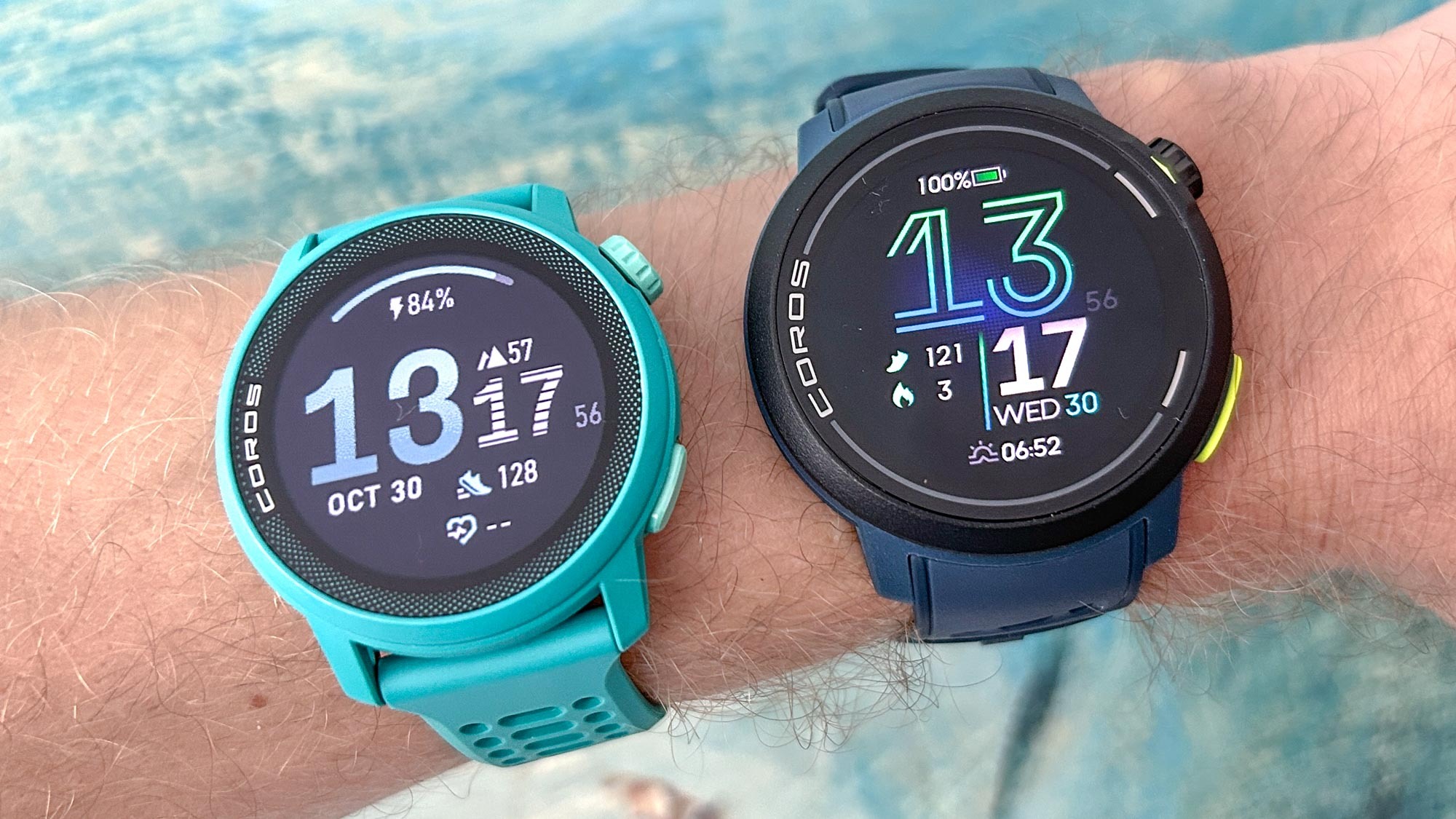
Both the Coros Pace Pro and Coros Pace 3 are among the best sports watches I’ve tested, offering all the essentials athletes need in lightweight designs that are comfortable to wear 24/7.
I tested both watches extensively for my reviews on Tom's Guide, and have also worn both at the same time for two weeks to compare them head-to-head. Without a doubt, the standout difference between the pair is the AMOLED screen on the Coros Pace Pro, which elevates the user experience significantly.
However, the Coros Pace 3 is considerably cheaper and matches the Pace Pro on most other features, including accuracy, so if you’re not too worried about having the brighter display the Pace 3 is better value.
Coros Pace Pro vs Coros Pace 3: price and availability
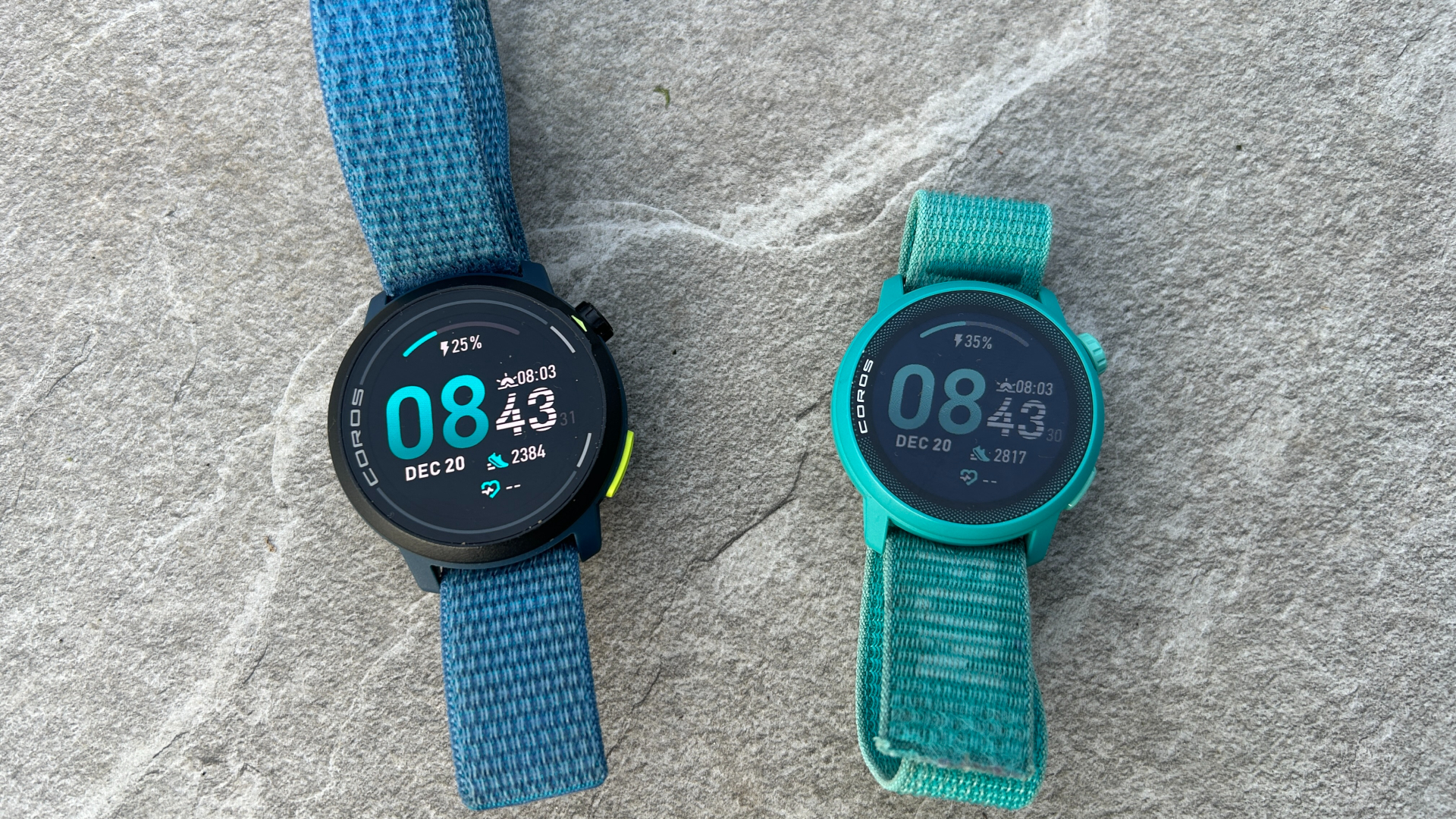
The Coros Pace 3 launched in August 2023 and is the entry-level watch in the Coros range, costing $229 / £219. The Coros Pace Pro launched in October 2024 and costs $349 / £349, with the key upgrades you’re paying for being the AMOLED screen and offline maps.
Coros Pace Pro vs Coros Pace 3: specs
Coros Pace Pro vs Coros Pace 3: design
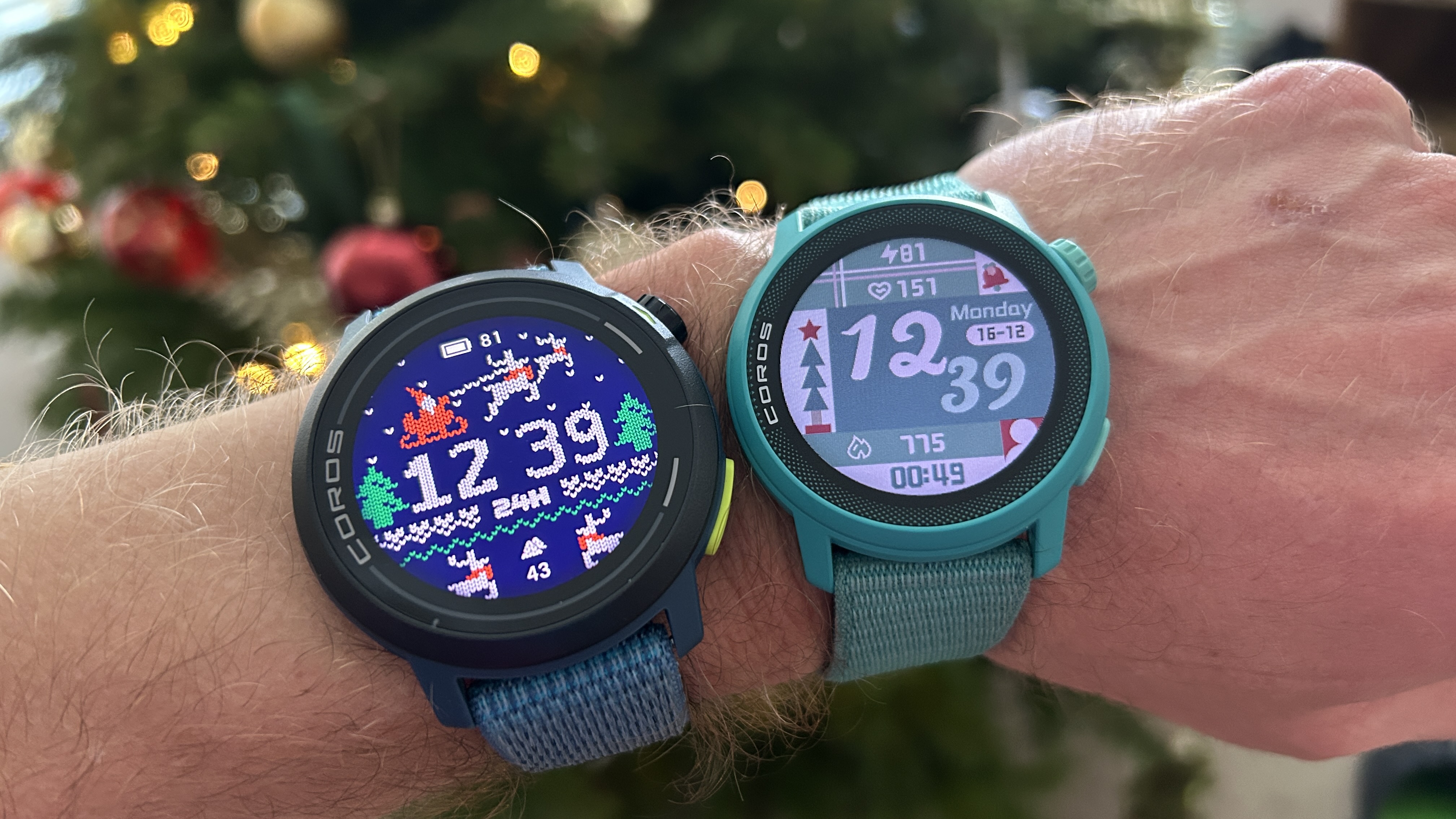
Both the Pace Pro and Pace 3 are lightweight plastic watches with glass screens, but the Pace Pro is a bigger watch with a bright AMOLED display that’s clearer and more engaging than the memory-in-pixel screen on the Pace 3.
I found the AMOLED screen a big upgrade in visibility both during and outside of workouts, and while the MIP display on the Pace 3 isn’t hard to see, the AMOLED is clearer and makes the Pace Pro more engaging and enjoyable to use.
The Pace 3 is rightly renowned for being one of the lightest and thinnest sports watches you can get, and I worried that the Pace Pro would feel a lot larger on the wrist, but that isn't the case.
It sits snugly and feels just as thin and nearly as light as the Pace 3, and the larger screen is certainly a benefit rather than something that makes the watch too big.
Along with the screen and size, another design difference is that the Pace Pro has a larger back button and its digital dial is made from steel, unlike the plastic dial on the Pace 3. This steel dial means the Pace Pro can take ECG measurements, a feature that isn’t available on the Pace 3.
Under the hood the Pace Pro has a much faster processor than the Pace 3, which makes navigating its menus and using the offline maps it offers snappier. The Pace 3 doesn’t have maps, but does offer breadcrumb navigation.
Both watches offer the same water resistance rating of 5ATM and have the same sensors including a barometric altimeter and pulse oximeter. The Pace Pro offers a lot more storage at 32GB vs 4GB on the Pace 3, which provides space to download maps and store music on the watch. Both watches offer music storage, but can’t link up to streaming services.
Coros Pace Pro vs Coros Pace 3: GPS & HR accuracy
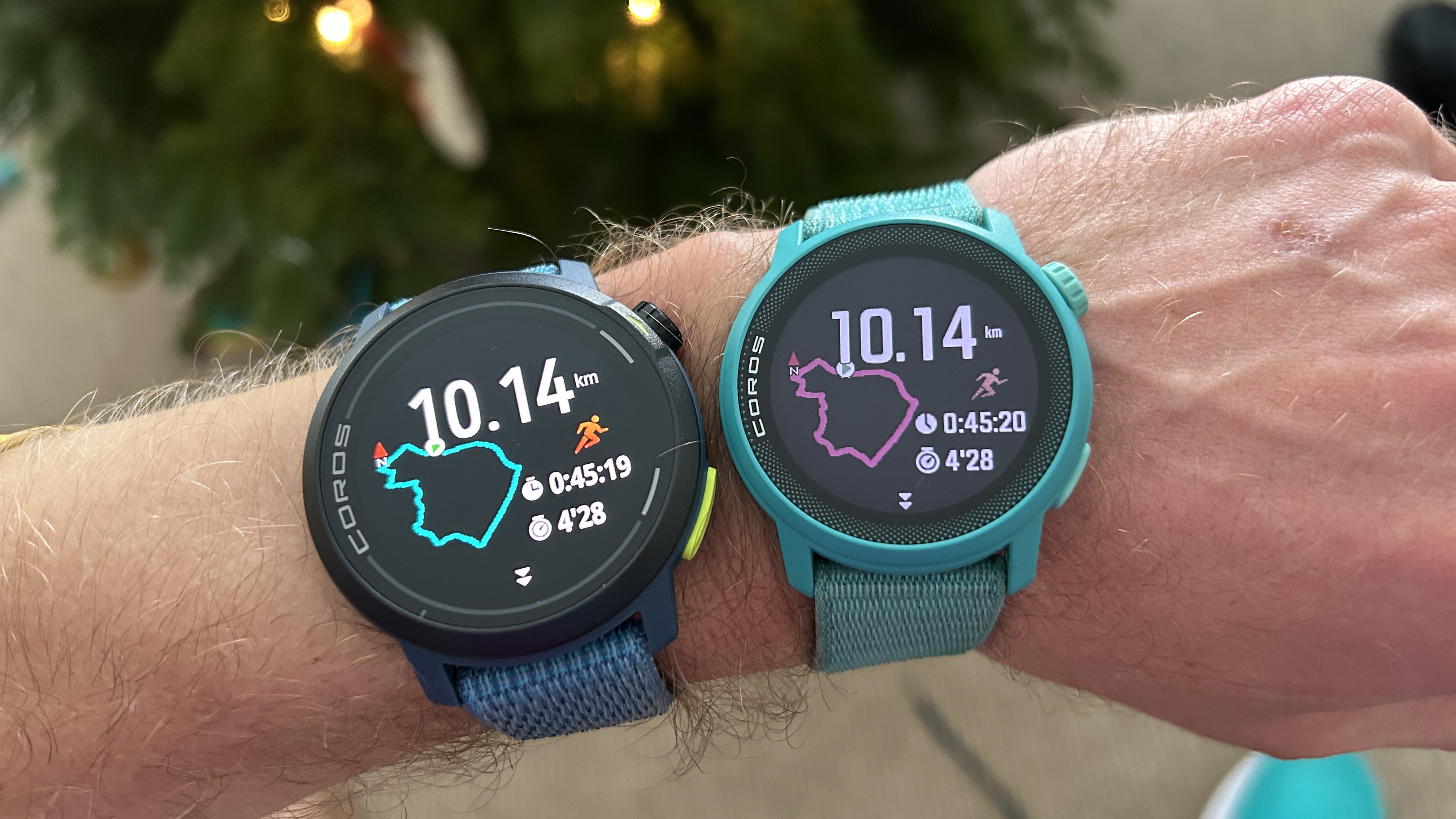
Throughout my testing of both watches I’ve used them in the most accurate dual-band GPS mode, and I’ve checked the GPS tracks from both to see if any inaccuracies have cropped up while also looking at the pacing stats during my runs.
To check their heart rate accuracy I’ve compared them to the reading of the Wahoo TRACKR chest strap monitor, which I’ve found to be very reliable during my testing.
Both the Pace Pro and Pace 3 have impressed me for accuracy, and having used them for lots of runs and bike rides side-by-side I couldn’t say that one is more accurate than the other.
According to Coros, the Pace Pro has an improved satellite configuration to make the GPS more accurate, but the Pace 3 generally matched it very closely for distance, pace and the GPS track itself. I had no concerns about the GPS accuracy of either watch.
The heart rate tracking was less reliable on both the Pace 3 and Pace Pro, especially when using them in cold conditions which makes life harder for the optical sensors on the watches.
Both are accurate enough to use to judge your effort during workouts, and when using them in warmer weather they generally matched the readings from the Wahoo TRACKR closely, but in colder periods I’d pair an external sensor to both watches to get the most reliable results.
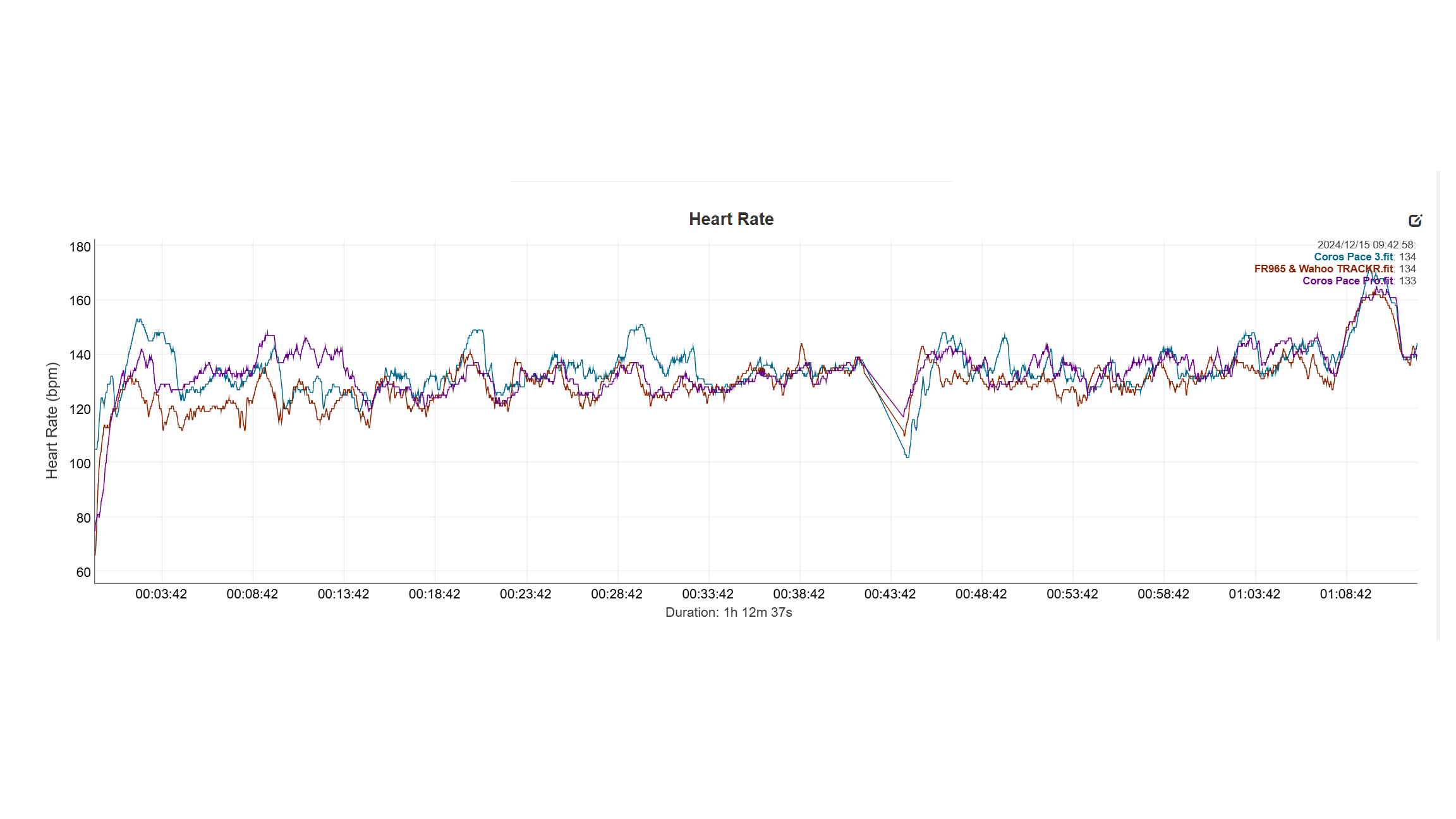
This is more important if you plan to use the training analysis and race predictions on the watches, which relies on the heart rate data from your workouts. Both watches offer the same Coros EvoLab analysis, so there are no upgrades to be had in upgrading to the Pace Pro there.
Coros Pace Pro vs Coros Pace 3: maps and navigation
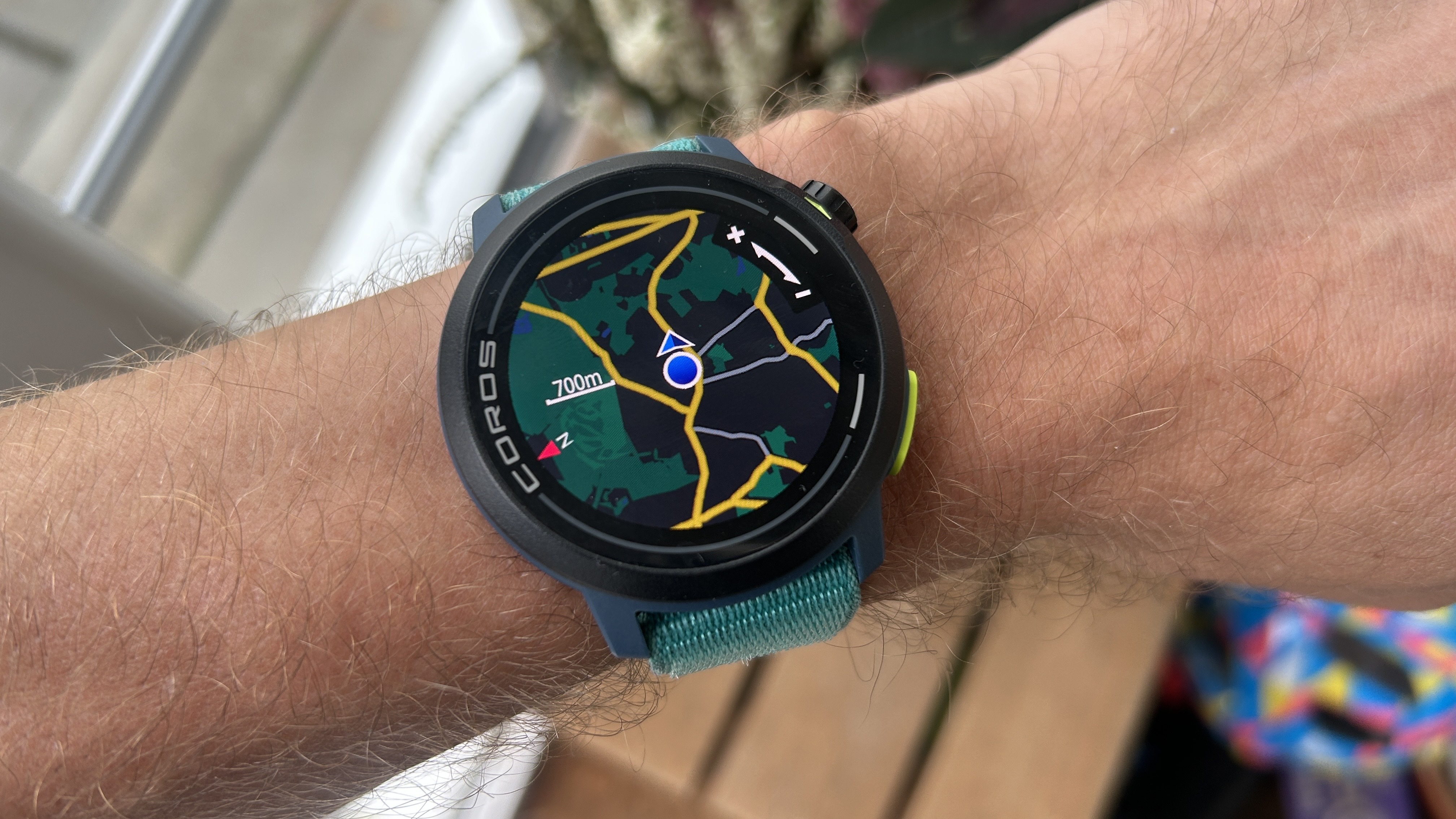
The Coros Pace Pro offers offline color maps that you download to the watch using the Coros app, while the Pace 3 just offers basic line and pointer breadcrumb navigation.
Both will help you follow routes and get back to your starting point during outdoor activities, but the maps are an upgrade and undoubtedly make it easier to navigate.
I tested the Pace Pro’s maps out on a couple of trips and they were very helpful, especially when in Paris and trying to navigate the maze of streets in France’s capital during runs.
The maps will be more useful to those who travel regularly and trail runners in particular, and for the most part I didn’t need them and the basic navigation on the Pace 3 was fine, but they are one of the main upgrades you get on the Pace Pro.
Coros Pace Pro vs Coros Pace 3: battery life
Both the Coros Pace Pro and Pace 3 punch above their light weight for battery life and despite the fact that the Pace Pro has an AMOLED display, it still lasts almost as long as the Pace 3 on a charge.
With my use, running every day with the screen always-on, the Pace Pro lasted me five or six days of use, and this extended beyond seven days when I was injured and didn’t run much. When running every day the Pace 3 usually lasts me six or seven days.
The Pace 3 lasts longer than the Pace Pro for general use in watch mode, while the Pace Pro offers longer GPS battery life, so the more you train using GPS the closer the total battery life will be between the pair. You can also set the screen on the Pace Pro to raise to wake and it will outlast the Pace 3, so overall I give the AMOLED watch a win on battery life.
Coros Pace Pro vs Coros Pace 3: verdict
For me, the larger AMOLED screen makes it worth paying the extra to get the Pace Pro, which is a much more enjoyable watch to use outside of training in particular as a result of its brighter display.
The maps are also a nice extra feature, and its faster processor and larger storage should make it more future-proof in terms of software updates.
If you just plan to buy a watch to use during training sessions, however, the Pace 3 will more than suffice and it’s a big saving. If you’re simply not that bothered about the AMOLED display on the Pace Pro, then the Pace 3 is certainly a better pick, because it otherwise matches up well on accuracy, sports tracking, training analysis and battery life.







